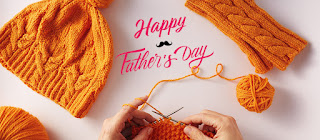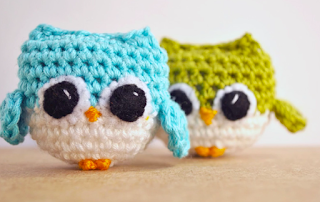In the crochet world, colorwork techniques can breathe life
into your creations, infusing them with intricate patterns, motifs, and
designs. From simple dishcloths to elaborate sweaters, scarves, and home décor
items, the possibilities become endless when you delve into colorwork. You can
unlock a new level of creativity with your trusty crochet hooks and a grasp of
basic stitches. Let's explore various colorwork techniques that can elevate
your crochet projects to new heights.
Starting with the
Basics
Colorwork techniques involve the artful interplay of
multiple yarn hues. Selecting a palette of harmonizing or contrasting shades
sets the stage for captivating effects. Switching between yarns is vital. You
can either carefully snip and weave the old color's end while introducing the
new color or adeptly carry the thread across the back when needed. For seamless
guidance, consult our user-friendly guide on changing colors during crochet.
Crocheting with
Colored Yarns
This is the most straightforward technique of colorwork in
crochet. Choose a hand-dyed yarn in
a variegated shade and work a simple stitch pattern. The colorways will add to
the beauty of the fabric without you doing anything special. You can also
choose one or multiple yarns for color changes to create an ombre or gradient
effect in your crafting project.
Duplicate Stitches in
Crochet
Simple enough and handy for other purposes, too. If you want
to add some color and design to your crocheted fabric, simply thread a wool
needle and trace the path of the stitch. Use a contrasting shade of paint if
you want to stand out. You can choose any wool/ finishing or darning needle,
the same size or smaller size than the crochet hook used for the
project. This works for single crochet stitches that create the densest fabric
of all stitches but may not be the best alternative for the open treble crochet
stitch.
Stranded Crochet
Stranded crochet, a quickly adopted technique, is
characterized by using multiple colors within a single row or round. The name
"stranded" originates from the threads, or "floats," that
run along the back of the fabric, connecting the stitches. It's ideal for
compact patterns with short color repeats, as longer floats can become unwieldy
and tangled. This technique works well for non-reversible designs. With the
back side concealed, it camouflages the unruly network of yarn. In practice,
both colors are carried across the row, with one color worked at a time. Think
of it as a crochet counterpart to knitting's Fair Isle technique, where two colors
are used within one row or round.
Tapestry Crochet
Tapestry crochet, a centuries-old technique, involves two
yarn colors. While both colors are carried throughout the row, only one is
crocheted at a time. This method yields a dense, durable fabric, perfect for
items like bags, baskets, and home décor pieces. The unused color trails along
the back are picked up when required.
Intarsia Crochet
Intarsia crochet, a
technique suited for intricate designs, employs separate bobbins or yarn balls
for each color block. Unlike carrying unused colors, the dropped yarn is not
carried along the back, resulting in a cleaner backside with fewer floats. This
technique shines in projects such as blankets, sweaters, and scarves where both
sides of the project are visible.
Overlay Mosaic
Crochet
Overlay mosaic crochet adds depth by crocheting a base
fabric in one color and then adding contrasting-colored decorative stitches or
motifs on top. First, create the base in the primary color. Subsequently,
employ a different hue for surface stitches like slip stitches, single crochet,
or puff stitches, following a chart or pattern for guidance. This technique
lends itself to intricate designs atop solid backgrounds.
Pro Tips for
Colorwork Success
When engaging in colorwork crochet, consider these tips for
impeccable results:
• Maintain consistent tension to avoid loose or tight
stitches that disrupt the fabric's appearance.
• Weave in loose ends as you progress to minimize
post-crochet finishing tasks.
• Adopt clever color management techniques, such as twisting
or carrying unused yarn behind your work to prevent tangling.
• Simplify your process with stitch markers or bobbins to
keep yarn organized and prevent confusion.
Managing Yarn Tails
The challenge of managing multiple yarn tails can be
conquered with ease:
• Carrying Unused
Colors: Crochet over unworked strands on the right side, concealing them
while ensuring a clean appearance. Alternatively, opt for the
"floating" technique by merely yarning over to change colors, letting
the yarn flow discreetly along the fabric's reverse side.
• Snipping Tails: Trim
yarn tails when they're no longer needed. Weave in ends as you work or after
the project is completed and blocked. Use a finishing needle to thread and
secure yarn ends within the stitches.
Embrace the Vibrant
World of Colorwork
While colorwork
crochet may require practice and patience, the rewards are boundless.
It allows you to infuse your projects with unique charm and visual appeal.
Explore diverse color combinations and techniques, transforming your crochet
creations into vibrant works of art. Enjoy the journey of creating eye-catching
projects that reflect your individuality and creativity!
For any smooth crochet experience, work with the best
crochet hooks. You can easily craft your project by choosing the
correct size for your yarn and ensuring your tool has a comfortable handle.


.jpg)
.jpg)




